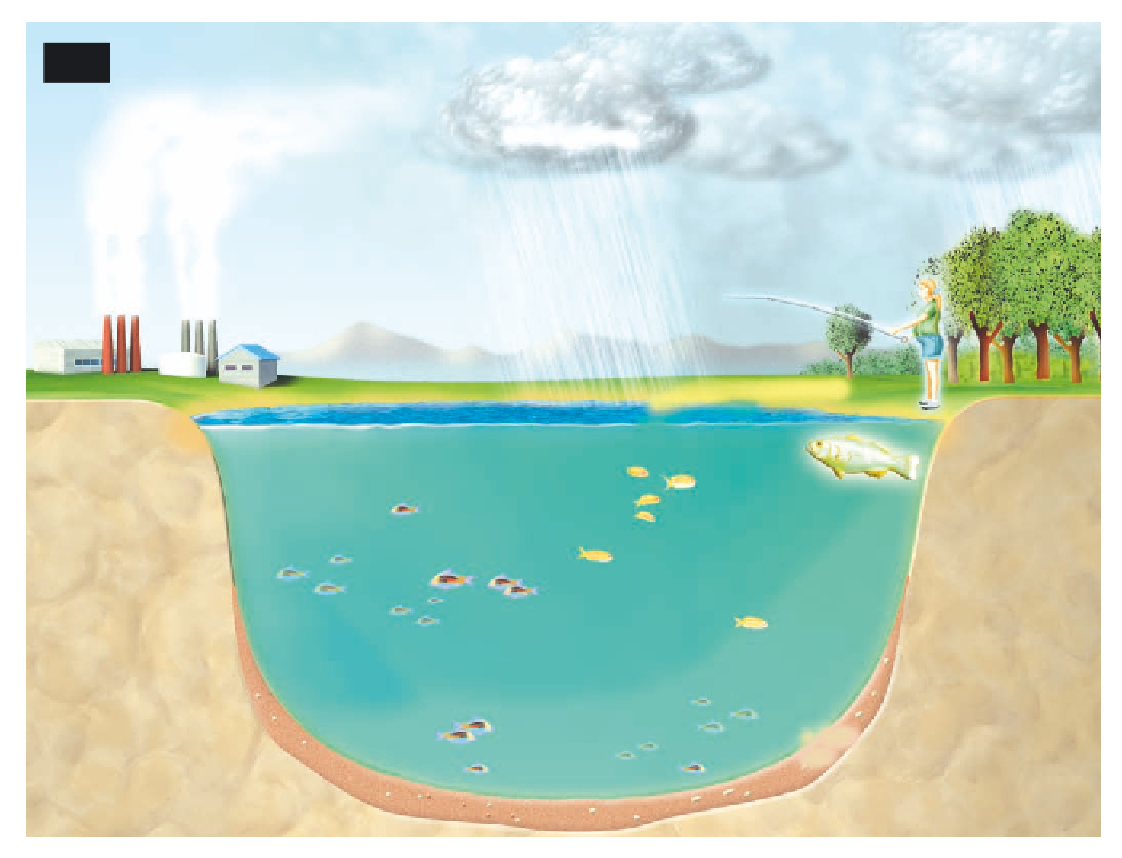Environmental Engineering Reference
In-Depth Information
(Hg) or particulates of inorganic mercury (Hg
2+
) salts
(such as HgS and HgCl
2
).
Second,
they may eat fish
contaminated with methylmercury (CH
3
Hg
+
). The
greatest risk is brain damage from exposure to low lev-
els of methylmercury in fetuses and young children
whose nervous systems are still developing.
Once moderately harmful inorganic mercury ions
(Hg
2+
) enter an aquatic system, bacteria may convert
them to highly toxic methylmercury, which can be bio-
logically magnified in food chains and webs (Fig-
ure 17-22). As a consequence, high levels of methyl-
mercury are often found in the tissues of sharks,
swordfish, king mackerel, tilefish, and albacore
(white) tuna feeding at high trophic levels in food
chains and webs. In 2004, the U.S. Food and Drug
Administration (FDA) and the EPA advised women
who may become pregnant, pregnant women, and
nursing mothers not to eat shark, swordfish, king
Science Case Study: Mercury
Mercury is released into the environment mostly by
burning coal and incinerating wastes and can build to
high levels in some types of fish consumed by humans.
Mercury—a toxic metal—is released into the atmo-
sphere from rocks, soil, and volcanoes and by vapor-
ization from the ocean. Such natural sources account
for about one-third of the mercury released into the
atmosphere each year. According to the EPA, the re-
maining two-thirds comes from human activities—
mostly coal burning and to a lesser extent waste incin-
eration, gold and silver mining, and smelting of metal
ores. Once in the atmosphere, elemental mercury may
be converted to more toxic inorganic and organic mer-
cury compounds, as shown in Figure 17-22.
Humans are exposed to mercury in two ways.
First,
they may inhale vaporized elemental mercury
AIR
WINDS
PRECIPITATION
WINDS
PRECIPITATION
Hg
2+
and acids
Hg
2+
and acids
Hg and SO
2
Photo-
chemical
oxidation
Human sources
Inorganic mercury
and acids
(Hg
2+
)
Elemental
mercury
vapor
(Hg)
Inorganic
mercury
and acids
(Hg
2+
)
Coal-
burning
plant
Incinerator
g
2+
and
WATER
Large fish
BIOMAGNIFICATION
IN FOOD CHAIN
Small fish
Phytoplankton
Zooplankton
Bacteria
and acids
Organic
mercury
(CH
3
Hg
+
)
Elemental
mercury liquid
(Hg)
Inorganic
mercury
(Hg
2+
)
Oxidation
Bacteria
Settles
out
Settles
out
Settles
out
SEDIMENT
Figure 17-22
Science:
cycling of mercury in aquatic environments, in which mercury is converted
from one form to another. The most toxic form to humans is methylmercury (CH
3
Hg
+
), which can be bio-
logically magnified in aquatic food chains. Some mercury is also released back into the atmosphere as
mercury vapor.













































